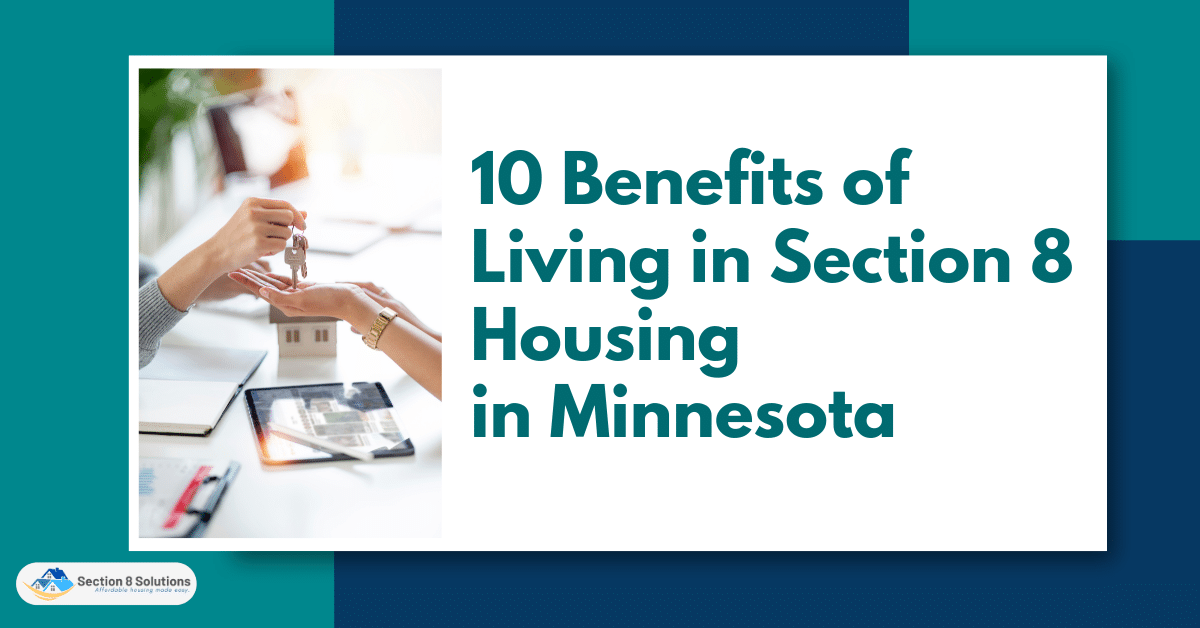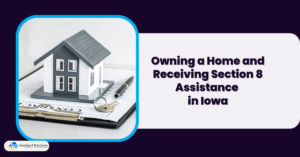Living in Section 8 Housing in Minnesota offers numerous benefits, including affordable rent, access to safe and well-maintained housing, and the opportunity to build a sense of community. Additionally, residents can enjoy various support services and resources that help improve their quality of life, such as job training programs and educational opportunities.
In this blog, we will explore the concept of Section 8 Housing and its purpose in providing affordable housing solutions for low-income individuals and families in Minnesota. The Section 8 program, administered by the U.S. Department of Housing and Urban Development (HUD), offers rental assistance to eligible participants to ensure they have access to safe and well-maintained housing options, regardless of their financial constraints.

1. Affordable Rent
Section 8 Housing offers subsidized rent, making it more affordable for tenants and easing financial burdens. Eligible participants receive rental assistance in the form of vouchers, which cover a significant portion of their rent payment. The amount of assistance is determined based on the household’s income and size, ensuring that those with lower incomes receive more substantial support. This reduction in housing costs allows low-income families and individuals to allocate their limited resources to other essential needs, such as food, healthcare, and education. By alleviating the financial strain of housing expenses, Section 8 Housing empowers families to achieve greater financial stability and work towards self-sufficiency.
2. Safe and Well-Maintained Housing
Emphasizing safety and maintenance, Section 8 Housing ensures that residents have access to well-kept and secure living environments. Landlords participating in the program must meet specific housing quality standards set by HUD. Regular inspections are conducted to verify compliance, guaranteeing that tenants are residing in habitable, hazard-free homes.
This not only enhances the overall living conditions but also contributes to the well-being and dignity of Section 8 residents. Families can live without fear of hazardous conditions, such as mold, lead paint, or structural issues, and children can grow up in a safe and nurturing environment. The program’s focus on safe and well-maintained housing contributes to better physical and mental health outcomes for its participants.

3. Access to Quality Neighborhoods
Section 8 Housing vouchers provide recipients with the opportunity to live in various neighborhoods, including those with better schools, amenities, and employment opportunities. By enabling tenants to choose housing in different areas, the program promotes socioeconomic mobility, breaking the cycle of poverty for families and giving them access to resources that can positively impact their lives.
Families can move to neighborhoods with lower crime rates and better access to healthcare and education, leading to improved overall well-being. Additionally, living in quality neighborhoods can create a positive environment that fosters personal and professional growth, enhancing residents’ chances of breaking free from poverty and creating a better future for themselves and their children.
4. Flexibility in Housing Choice
One of the key advantages of Section 8 Housing is the flexibility it offers in housing choice. Participants can select suitable housing, whether it’s an apartment or a single-family home, based on their family size and preferences. This flexibility allows them to find housing that meets their specific needs, such as accessibility for disabled family members or proximity to essential services like public transportation and grocery stores. The ability to choose a home that accommodates their lifestyle and preferences fosters a sense of ownership and autonomy in their living arrangements, promoting a sense of stability and belonging.

5. Reduced Homelessness
Section 8 Housing plays a crucial role in reducing homelessness by providing stable housing options for vulnerable populations. The program offers a lifeline to those facing housing instability, granting them access to safe and affordable homes, thereby reducing the risk of homelessness and promoting stability for families and individuals in need. When individuals and families have access to stable housing, they can focus on addressing other challenges they may be facing, such as employment, education, or health issues. Stable housing serves as a foundation for overall well-being, enabling participants to build a more secure future for themselves and their families.
6. Supportive Services
In addition to subsidized rent, Section 8 Housing provides access to a range of supportive services for its residents. These services may include counseling, job training programs, childcare assistance, and more. The availability of these support services addresses the multifaceted needs of low-income individuals and families, helping them move towards self-sufficiency and independence.
For instance, job training programs can equip individuals with the skills needed to secure better employment opportunities, lifting them out of poverty. Counseling services can help address mental health challenges, while childcare assistance enables parents to pursue education or employment without worrying about their children’s well-being. These support services empower Section 8 Housing residents to overcome obstacles and improve their overall quality of life.

7. Improved Health Outcomes
Stable housing provided by Section 8 contributes to improved health outcomes for its residents. Access to secure and affordable housing reduces stress and provides a supportive environment, positively impacting physical and mental health. When individuals have a stable place to call home, they are more likely to seek and receive consistent medical care, leading to better management of chronic conditions and improved overall health. Stable housing also reduces the risk of exposure to environmental hazards and improves access to nutritious food, further contributing to better health outcomes. As a result, individuals and families can focus on personal growth and development, leading to healthier and happier lives.
8. Financial Savings
Living in Section 8 Housing allows tenants to save a significant portion of their income due to the subsidized rent. With reduced housing costs, families can allocate their savings toward building a better future. These financial savings can be used for various purposes, such as further education, vocational training, or saving for homeownership. By providing the opportunity to save money, Section 8 Housing empowers families to plan for long-term goals, breaking the cycle of poverty and fostering financial independence.

9. Enhanced Sense of Community
Section 8 Housing fosters a strong sense of community among its residents. By providing stable and secure housing, the program encourages social interactions and support networks among neighbors. Tenants often develop strong bonds, offering each other mutual assistance and fostering a close-knit community. This sense of community helps individuals feel connected, supported, and valued, creating a positive living environment for all. Residents may organize community events, share resources, and collaborate on initiatives that benefit the entire community. Such an atmosphere of support and camaraderie contributes to the overall well-being and happiness of Section 8 Housing residents.
10. Educational Opportunities
Families living in Section 8 Housing gain access to various educational resources that can significantly impact their children’s academic performance. These resources may include after-school programs, tutoring services, and partnerships with local educational institutions. By investing in education, the program aims to break the cycle of poverty and empower the next generation to achieve their full potential.
Children who receive additional educational support are more likely to excel academically, increasing their chances of pursuing higher education and future career opportunities. Furthermore, by emphasizing the importance of education, Section 8 Housing helps create a positive environment that encourages lifelong learning and personal growth.

Conclusion
In conclusion, Section 8 Housing in Minnesota offers a myriad of benefits for low-income individuals and families. From providing affordable rent and safe housing to enhancing community support and educational opportunities, this program plays a vital role in promoting stability and uplifting the lives of those in need. By addressing housing and support service needs, Section 8 Housing creates a pathway toward self-sufficiency and a brighter future for vulnerable populations in the state. Through a combination of financial assistance, safe living conditions, and access to resources, Section 8 Housing empowers individuals and families to overcome challenges, break free from poverty, and build a more prosperous and fulfilling life.










